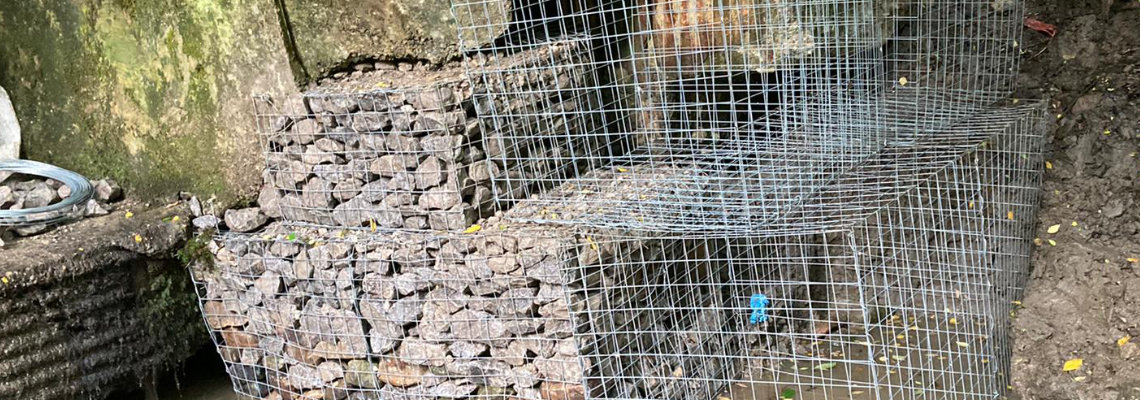This case study describes how our Infrastructure Services teams spotted an opportunity to improve water asset infrastructure to protect future water supplies in a way that avoided disturbing the ecological balance of the local watercourse.
The site is a stream between a water treatment works and a town populated by around 20,000 people. The works is a private water network owned by our customer and managed 24/7/365 by our multidisciplinary Severn Trent Services teams.

Towards the end of 2022, one of our distribution technicians was walking alongside the three-mile trunk water main that delivers wholesome water from the treatment works to the nearby town. He was proactively checking for leaks.
When he reached the stream, he noticed that part of the critical trunk main had become exposed and was open to the elements. Once upon a time, this trunk main crossed the stream over a pipe bridge. It had then been redirected through the stream. This was before our time.
Over the years, however, water erosion had moved sections of the river bed, revealing the pipework. While some of the original pipe bridge had washed away, a large concrete base – used to support the original pipe bridge – was left hanging over the trunk mains.
The problem was two-fold. Firstly, this critical water asset was in danger of being damaged, causing a burst and interrupting the water supply to the local properties. Secondly, if the pipe had burst, it was located in such a steep and overgrown ravine that safe access would have been challenging, especially in a time-critical situation.
Our Infrastructure Services teams reviewed several possible solutions. We also sought an external perspective from third parties – but with only environmentally intrusive options presented to us, those were quickly dismissed.
We then looked at the original pipe bridge structure to see if any of it could be salvaged. Samples were sent away for testing, and the results showed that the remains were of sound strength and structure. Therefore, we decided to reinstate the pipe bridge over the river using Gabion baskets as support.
To install the pipe bridge, we carefully removed all the undergrowth of the embankment so we could carve a path down the steep ravine to safely transport our people and the pipework. This path was made from 60 tonnes of recycled stone.
We connected the pipe bridge to the trunk mains while the water supply was valved off either side of the river – and while water storage levels were high – to avoid supply interruptions.
The sustainable approach we used in recycling the original pipe bridge meant we avoided intrusive practices which would have harmed the ecology of the watercourse and resulted in the use of tonnes of concrete.

This proactive action to improve a critical asset has prevented a burst that could affect the water supplies to a population of 20,000 people and incur thousands of pounds worth of tankering costs.
If the trunk water main had burst, accessing such a steep and overgrown ravine would have been very dangerous for our teams, who would have been under extreme time pressure to repair the pipe.
Our work has bolstered the network’s resilience for many years to come. And coincidentally made a local farmer – who was never happy about the pipe going under the river in the first place – a happier man!
- A reinstated pipe bridge that will last for many years to come
- Uninterrupted water supplies to a population of around 20,000 people
- A 10-week operation involving 12 Severn Trent Services Infrastructure Services experts
- 60 tonnes of recycled stone used to create safe access
- 100% echo valves made from recycled materials rather than concrete
- Clean water assets repair
- Environmental protection
- Community engagement
- A safe operating area for field staff
- Sustainable solutions and practices









